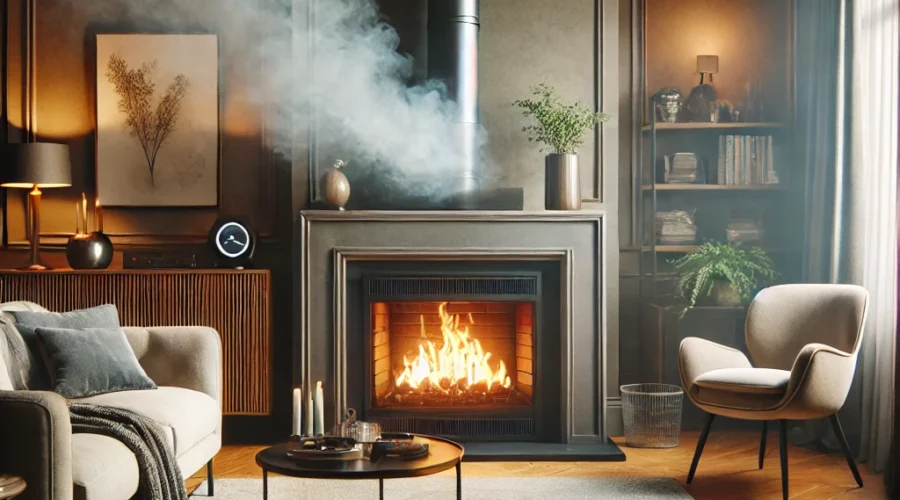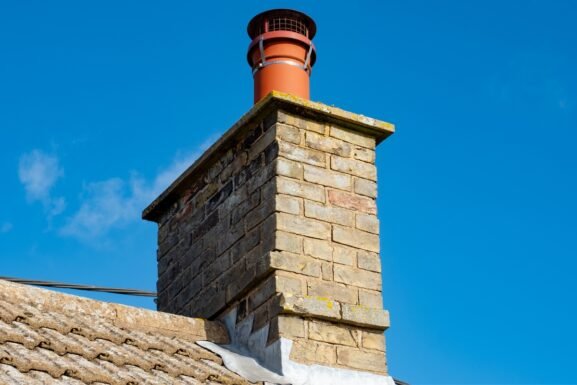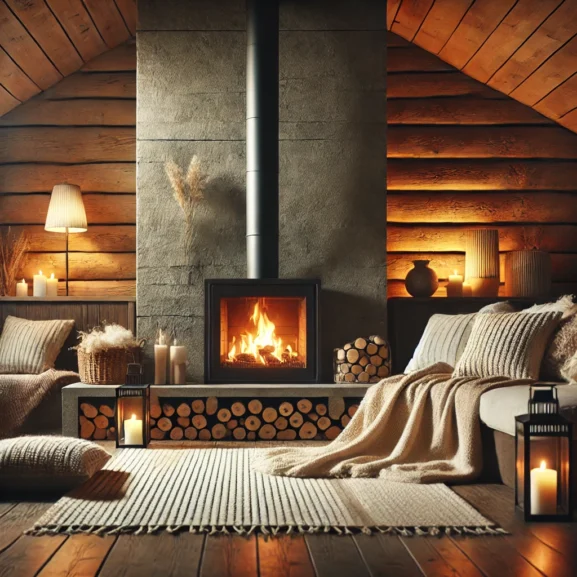Inadequate Venting in Gas Fireplaces: Risks, Signs, and Safety Solutions
Gas fireplaces add warmth and character to our homes. However, they can be very risky if they are not vented properly. Some people in the house may not realize that poor ventilation is dangerous. It can even lead to carbon monoxide poisoning. To make sure our families are safe, it is about time that we pay attention to good ventilation.
Several signs show that a gas fireplace is not venting properly. This article will also explain the dangers of poor ventilation. You’ll learn how to prevent fireplace problems and how to resolve them efficiently and safely. We can only prevent bad outcomes by staying informed. Let’s enjoy being cozy near our gas fireplaces while keeping ourselves updated.
A Beginner’s Guide to Gas Fireplaces: Everything You Need to Know
A gas fireplace provides the warmth of a fire without the mess that comes with burning wood. However, understanding the characteristics of gas fireplaces is important. It helps us avoid dangers.
Vented vs. Unvented Fireplaces: Vented models release gases outside, helping prevent dangerous carbon monoxide buildup. Unvented fireplaces release exhaust indoors, so they must be used carefully and need proper ventilation.
Proper Venting: Poor venting can lead to serious problems. It increases the risk of carbon monoxide and can block the vent. This may lower the fireplace’s efficiency or create safety issues. Our specialists can assess the situation. They help ensure the right supply and exhaust air quality.
Common Vent Issues:
- Chimney airflow problems
- Gas fireplace ventilation issues
- Improper vent sizing
We discourage DIY vent fixes, as they might worsen the problem or void warranties. Reach out to certified professionals for tailored solutions that are perfect for local fireplace needs.
For more on fireplace safety, visit the Chimney Safety Institute of America and the National Fire Protection Association.
The Importance Of Proper Venting
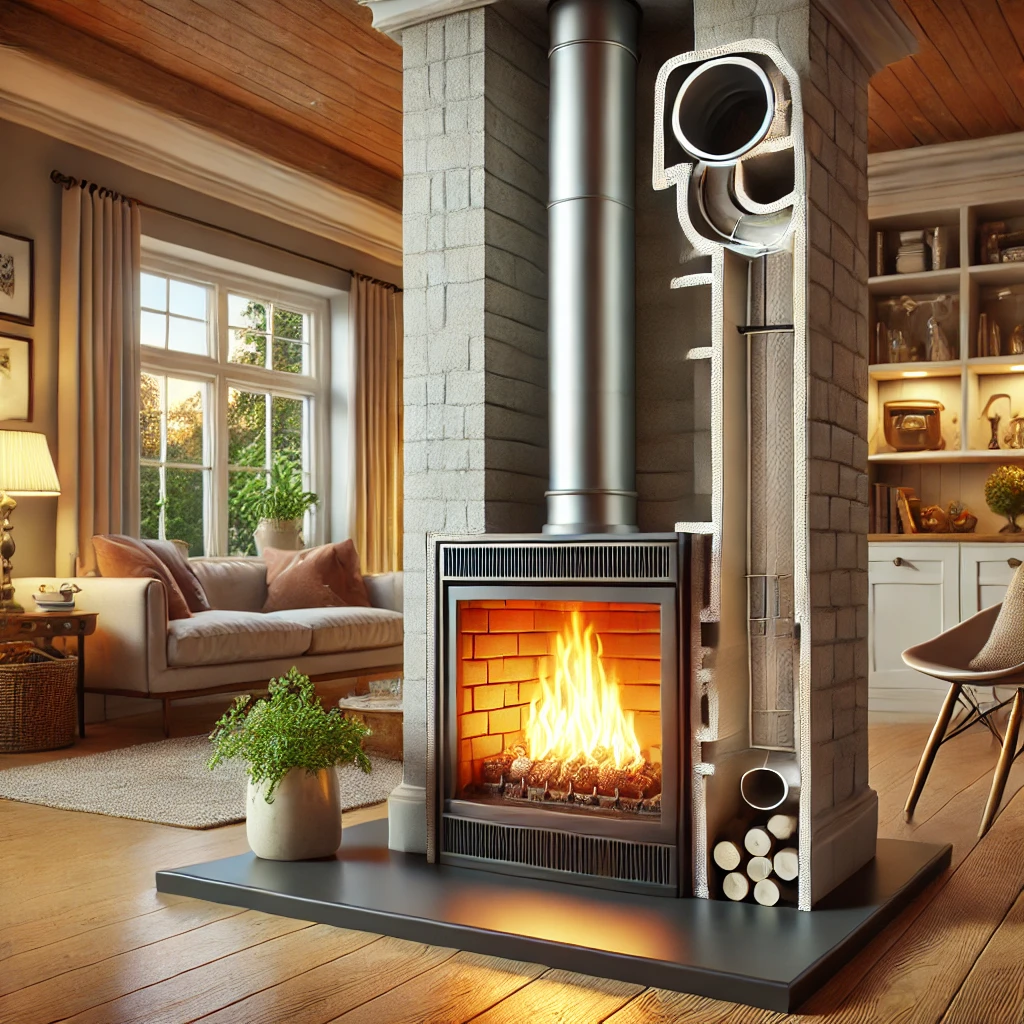
Ensuring proper venting in gas fireplaces is essential for safety and efficiency. Without it, fireplaces can cause serious issues.
How Venting Works In Gas Fireplaces
Gas fireplaces need proper ventilation. This is important because ventilation helps direct the byproducts of combustion outside. The gas byproducts are expelled through a chimney or flue. This keeps your home safe by ensuring that harmful gases are removed.
Some newer models release exhaust indoors, so they have strict usage conditions. These rules are necessary to prevent any problems related to gas fireplaces.
Proper venting gives us fresh air for burning fuel. It helps remove toxic gases and other harmful products released outside our homes. Lack of the process affects the working of gas fireplaces, and the chimney venting is not well done. Fun fact: Your fireplace cannot tell jokes, but if it is not properly vented, it will certainly try to gas you!
Risks Associated With Inadequate Venting
Improper venting can be very dangerous. One major risk is carbon monoxide when using fireplaces. This toxic gas is odorless, which makes it especially dangerous. You may not even know you’re being exposed to it. If there’s a blockage in the vent of a gas fireplace, it can create serious safety issues. This is a situation we should all be concerned about.
Poor fireplace venting may be obvious if there is a build-up of soot or a foul smell in your home. Such signals should not be laughed off, unlike not paying attention to your dog’s efforts to pursue a squirrel, which is inadvisable. Chimneys face many problems. These issues often come from airflow problems. This shows how important it is to have regular check-ups.
We invite you to visit us to keep your home safe and comfortable. Reach out to certified professionals for a consultation. For more safety tips, explore resources from the Chimney Safety Institute of America and the National Fire Protection Association.
Identifying Inadequate Venting In Gas Fireplaces
Identifying areas of poor venting in gas fireplaces helps us check safety and efficiency. It’s important to fix these issues now to avoid problems and inconvenience in the future.
Common Warning Signs
Certain signs scream “gas fireplace ventilation issues.” Watch for:
- Soot Build-up: Not to be confused with a new paint job—if you see black streaks, there might be a problem.
- Unpleasant Odors: Rotten egg or sulfur smells mean trouble. Your nose should never be on the guest list!
- Poor Flame Quality: A flickering, yellow flame could signal a carbon monoxide risk. A safe flame equals a blue flame.
- Drifting Smoke: Smoke should exit, not hang around like an unwanted guest in your living room.
Do you notice any of these signs? Reach out to certified professionals for a consultation. Chimney airflow problems are no joke.
Tools And Techniques For Detection
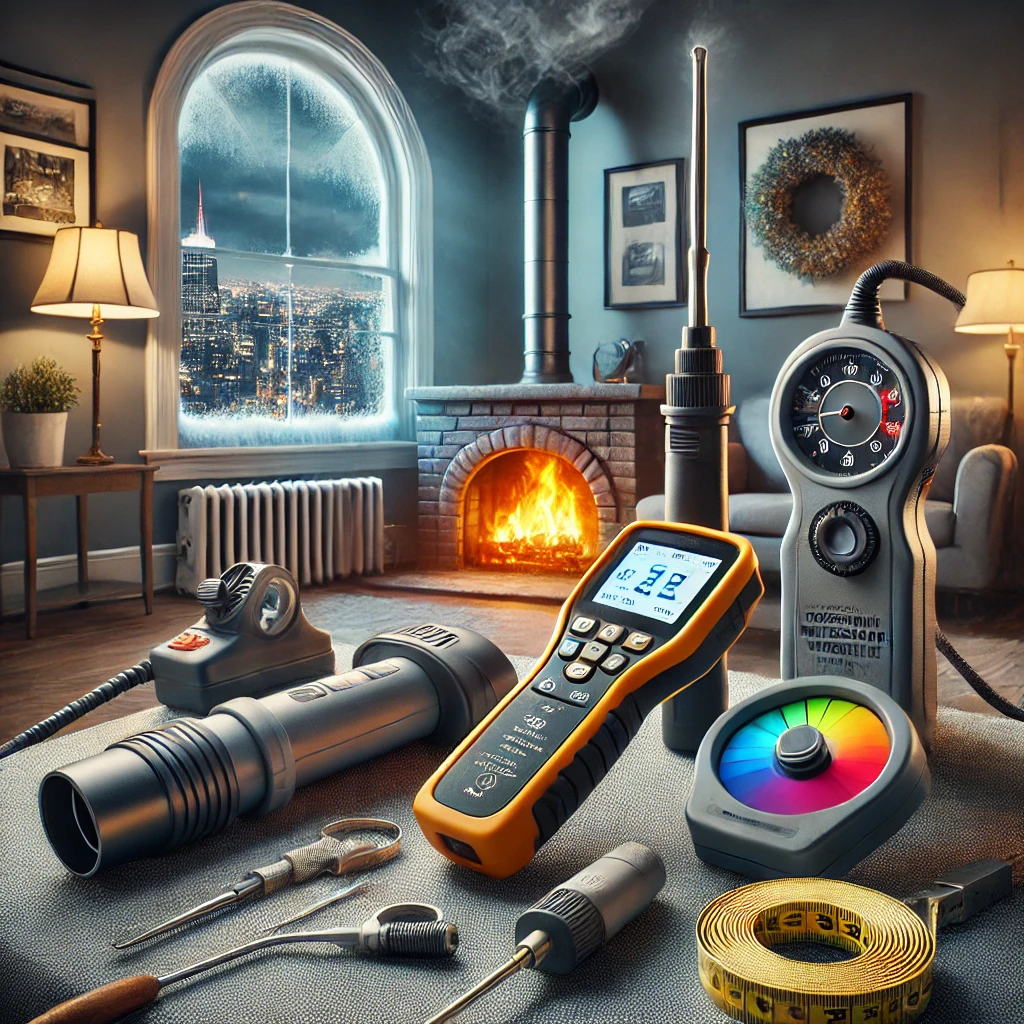
To spot inadequate chimney venting, certain tools work wonders:
- Carbon Monoxide Detectors: These catch silent, deadly gas. Set them and forget them, but they’ll remember.
- Smoke Testers: Like odor detectives, they sniff out smoke paths.
- Draft Gauges: These measure chimney airflow problems, confirming proper vent function.
- Thermal Imaging Cameras: They detect heat signatures and reveal blockages, like a superhero for your vents.
Always leave the tools to the experts. No one needs their living room to transform into a DIY disaster. Unique weather can affect gas fireplace airflow problems, making regular inspections crucial. Check resources from the Chimney Safety Institute of America and the National Fire Protection Association for more about fireplace safety.
Solutions For Improving Venting
Well-maintained gas fireplace venting promotes safety and efficiency. Now, let’s consider how to solve venting problems.
Professional Inspection And Repair
A daily professional check enhances the ventilation of gas fireplaces to their optimum level. Our specialists identify poorly vented embers, chimneys that are not vented at all, and inadequate venting on fireplaces and stove pipes quicker than a hound goes for the pork chop.
Pro assessments help:
- Detect carbon monoxide risk in fireplaces.
- Fix vent blockage in gas fireplaces.
- Improve gas fireplace efficiency.
Besides, we don’t advise DIY fixes, as they can worsen the problem. Our specialists bring their A-game using tools like smoke testers and draft gauges. For an overview of recommended inspection practices, visit the Chimney Safety Institute of America or the National Fire Protection Association.
Read also about what other states’ inhabitants are exposed to and how these shifts influence the chimney’s airflow. It turns out that local expertise is critical. Here, we are ready to solve the problems connected with gas fireplace airflow in the area and improve air circulation. Reach out to certified professionals to schedule a consultation service without any charges. Your home’s fireplace shall remain the only one to receive gifts this Christmas and New Year, and none shall be surprised by smoke signals.
Choosing The Right Fireplace For Proper Ventilation

Therefore, a fireplace should be chosen carefully since it is a unit that will serve its purpose safely and efficiently. The two main problems associated with gas fireplaces are inadequate air flow combined with blockage of the vents. These are some of the recommendations on how one can eliminate the carbon monoxide risk in fireplaces and, at the same time, enhance functionality.
Vent-free Vs. Vented Gas Fireplaces
Knowing and differentiating to make the right choice will be possible. Closed-combustion gas fireplaces release gases to the outside, which reduces the chances of carbon monoxide poisoning. They can deal with chimney airflow issues than the vent-free ones. Closed-combustion fireplaces release exhaust inside the home but often have bad venting of fireplaces. While they do not require a chimney, have the windows opened when using them to reduce the dangers of carbon monoxide in fireplaces.
Though vent-free is comfortable when there is no chimney, there are gas fireplace airflow issues and even carbon monoxide dangers. Our specialists can show you how to make it as safe and efficient as possible. Are you ready to make the right decision? Reach out to certified professionals for a consultation and to find out about our prices.
Key Features To Look For
Key features boost gas fireplace efficiency and safety. Look for:
- Proper Vent Sizing: Avoid improper vent sizing for optimal airflow.
- Advanced Thermostats: Keep temperatures stable and improve efficiency. It’s like a smart sweater for your home.
- Quality Burners: Ensure an even flame without soot buildup.
- Safety Valves: They reduce gas leaks and enhance safety.
These features optimize performance by addressing inadequate chimney venting. For reliable safety tips, check out resources from the Chimney Safety Institute of America and the National Fire Protection Association. Keep your family safe and warm without DIY disasters. Reach out to certified professionals for any fireplace conundrums.
Conclusion
Proper airflow is very important to gas fireplaces to promote safety and efficiency. Therefore, we have pointed out early signs, such as soot deposits and low-quality flames, as danger signals. It is possible to use devices such as carbon monoxide detectors to discover the problem, but it is still better to leave this to specialists. Much can be achieved simply by selecting the right fireplace and understanding its venting implications. Applying these measures will ensure that we get the best of the gas fireplaces without the negative effects associated with the product and are full of safety. We should always check the safety and comfort of our shelter daily and ask professionals if necessary.
Frequently Asked Questions
What are the health risks of poor ventilation in gas fireplaces?
Lack of circulation in gas fireplaces may pose critical health dangers and make a gas fireplace potentially fatal by releasing carbon monoxide (CO). Insufficient venting means that dangerous gases fail to get out of the building, and CO can build up inside, which is dangerous. Headaches, dizziness, nausea, and, in severe cases, death: such symptoms characterize CO exposure. Reducing these risks is possible by guaranteeing that ventilation is good enough to expel exhaust gases safely.
How can I identify signs of poor ventilation in my gas fireplace?
Its symptoms are soot accumulation on the surfaces, bad smells, poor-quality flame, and efflorescing smoke. Any of these signs ought to be resolved as early as possible to avoid endangerment of health and enhance the gas fireplace’s productivity. Such problems should, therefore, usually be addressed by professional personnel during periodic checkups.
What is the difference between vented and unvented gas fireplaces?
Vented means that the bad gases are conducted outside, which is a bit safer from the inside, preventing accidents such as smelling like carbon monoxide, among others. Closed combustion (or ventless) fireplaces expel flue gases within the living spaces, implying proper control of indoor pollutants. The two types are suitable for use, correct usage and air circulation are appropriate for both types, but the vented ones are preferred as they are safer and free from air-borne debris..
Why are regular professional inspections necessary for gas fireplaces?
Annual professional check-ups guarantee that your gas fireplace and venting system perform as required while being safe. Hiring professionals means that people who know that carbon monoxide can be dangerous can inspect for obstructions and make sure that the vents are the right size and work correctly. These inspections are useful as they eliminate dangers in addition to reaping the benefits of preserving the life of your fireplace for your home’s safety and protection.
Can I fix vent issues in my gas fireplace myself?
One should never try to carry out some basic repairs for the vent since it can exacerbate the situation and make mental warranties. The authors point out that improperly carried out repairs create potential safety hazards, specifically, greater carbon monoxide danger. Fireplace venting issues should best be repaired by professional technicians as they have the tools, knowledge, and experience for the task and guarantee the proper functioning of your fireplace.
What tools can detect venting issues in gas fireplaces?
Some of the venting problems that can be identified include the use of carbon monoxide detectors, smoke testers, draft gauges, and thermal imaging cameras. However, the use of these tools requires a professional level of skills to diagnose and solve issues. This is why an expert is hired, basically to assess a home before even painting or upholstering, so as to avoid DIY mishaps that could cost one’s life or lead to poor workmanship.
What features should I look for in a gas fireplace for better ventilation?
When selecting your gas logs, consider aspects such as vent sizing, sophisticated thermostats, high-quality burners, and safety check valves. All these elements improve your fireplace’s operational capabilities by providing the right air circulation and reducing CO danger. It is recommended that you talk to a specialist to choose a fireplace that is right for your house and its usage.
